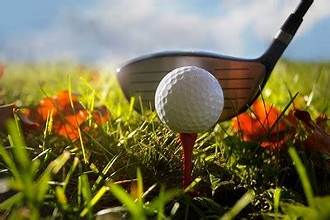Golf balls, seemingly simple on the surface, are the product of centuries of engineering and innovation. The journey from the primitive leather and feather-stuffed balls of yesteryears to today's high-tech spheres encapsulates a fascinating evolution that mirrors the history of the game itself. The inception of durable and affordable gutta-percha balls in the mid-19th century marked a significant turning point, and since then, each leap in golf ball technology has influenced how the game is played at every level.

Understanding the complex anatomy of a golf ball reveals how its construction impacts performance. Layers, materials, and dimple designs are meticulously refined to optimize distance, control, and stability. Decoding the factors that affect a golf ball's behavior during play is crucial for golfers looking to improve their game. Furthermore, personalized golf ball fitting has become an essential aspect of modern play, with a variety of ball types catering to different playing styles and abilities.
Innovations in technology continue to push the boundaries of what golf balls can achieve, as testing and regulation ensure that performance enhancements remain within the sport's standards. As the golf community becomes more conscientious, sustainability and environmental impact are increasingly factored into golf ball manufacturing, ushering in an era where playing performance need not come at Earth's expense.
Key Takeaways
- Golf ball development reflects a history of ingenuity and the evolution of the game.
- Ball anatomy and fitting are crucial for optimizing player performance.
- Ongoing innovations drive the future of golf balls, balancing play with sustainability.
The Evolution of Golf Balls

Tracing the remarkable transformation of golf balls sheds light on the game's history and the technological advances that have enhanced performance throughout the centuries.
From Feathery to Modern
The earliest golf balls were simple and rudimentary. Handcrafted from hardwoods, such as beech or boxwood, these wooden specimens had major limitations in flight and accuracy. By the early 17th century, the 'feathery' emerged—a leather pouch stuffed with bird feathers. These were labor-intensive to produce, yet represented a significant advancement, offering better flight characteristics. The journey from the feathery saw a pivot with the 19th-century introduction of the 'guttie,' a ball crafted from the gum of the Malaysian sapodilla tree, which led to mass production and a more democratic game.
The 20th century brought further improvements, with the 'Haskell ball' incorporating a rubber core and revolutionizing the game. This multi-layer construction opened the door to the diverse range of technologically sophisticated golf balls seen today: commanding better control, longer distance and custom performance attributes tailored to various playing styles.
Key Historical Milestones
-
1848: The 'guttie' golf ball, made from gutta-percha, marks a pivotal point, masses can access the sport, and its better aerodynamic properties make it favorable compared to its feathery predecessor.
-
1898: Coburn Haskell introduces the rubber-core golf ball, wrapped in a rubber thread, giving birth to the 20th-century modern ball, which significantly improved both distance and durability.
Current golf balls boast multiple layers and advanced materials, reflecting over a century's worth of innovation. Their meticulously-engineered designs cater to precision, spin, feel, and distance, making them integral to the sport's strategy and players' idiosyncrasies.
Anatomy of a Golf Ball

A golf ball's performance is intricately tied to its design, which includes the core composition, aerodynamic dimples, and the materials of the cover.
Core Composition
The core is the powerhouse of the golf ball, affecting compression and energy transfer. Typically made from a synthetic rubber compound, the core's composition determines the feel and the ball's potential distance. Manufacturers may alter the core's size and density to fine-tune the performance for different types of players.
Dimples and Aerodynamics
Dimples play a crucial role in a golf ball's flight by managing airflow and reducing drag. Their precise pattern and depth are engineered to maximize lift and maintain stability through varied weather conditions. The typical golf ball has between 300 to 500 dimples, which can be arranged in different patterns to influence trajectory and spin.
Cover Materials
The cover material impacts the golf ball's durability and control on the green. Urethane covers are commonly found in high-performance balls, offering superior feel and control for skilled players. Conversely, Surlyn covers are more durable and provide a firmer feel, which may result in longer distance shots and are often preferred by recreational golfers.
Types of Golf Balls

Golf balls are distinguished by their construction which affects performance aspects like distance, spin, and control.
One-Piece Construction
One-piece golf balls are the simplest and most durable type, primarily designed for beginners or for use on driving ranges. These balls are typically made from a solid piece of Surlyn with dimples molded into it. They provide limited flight distance and are lower cost due to their basic design.
Two-Piece Construction
Two-piece golf balls are popular among everyday golfers seeking a balance between performance and value. They consist of a solid rubber core and a durable plastic cover, usually Surlyn. This construction is engineered for maximum distance with a harder feel upon impact.
Multi-Layer Construction
Multi-layer golf balls offer advanced players improved control by adding extra layers between the core and the cover. These may include three-, four-, or even five-layer balls, with the additional layers providing nuanced performance characteristics. For example, three-layer balls can help achieve a balance between distance and spin control, while four- and five-layer golf balls offer even more spin separation and specialized performance benefits.
Performance Factors

Several factors are crucial for the performance of a golf ball, including how it reacts on impact, its flight characteristics, and the feeling it provides to the golfer.
Spin and Control
The spin of a golf ball affects its stability and trajectory after impact. Golf balls designed for control typically have a softer cover and a more pronounced dimple pattern, allowing for a higher spin rate. This enables experienced golfers to shape their shots and hold greens more effectively.
Distance and Velocity
A golf ball's distance is primarily determined by its ability to minimize air resistance and maintain velocity. Golf balls with a focus on distance often come with a harder cover and less spin, allowing them to travel further, particularly for players with higher swing speeds.
Compression and Feel
Compression measures the deflection a golf ball undergoes when it is struck. Low compression golf balls are typically softer, providing a better feel, which is preferable for players with slower swing speeds. In contrast, high compression balls cater to those with faster swings seeking more feedback from the ball.
Golf Ball Fitting

Golf ball fitting is an essential process that matches the ideal golf ball to a player's specific skills and swing characteristics for optimal performance.
Player Skill Level
The player skill level heavily influences the selection of golf balls. Beginners may benefit from two-piece balls that prioritize durability and distance, while advanced players often opt for multi-layer balls designed for better spin control and feel.
Swing Speed Considerations
Swing speed is a critical factor in golf ball fitting. Golfers with fast swing speeds can maximize their performance with golf balls that have high compression rates, translating to better energy transfer. Conversely, slower swing speeds might be better suited to low compression balls for improved distance.
Innovations in Technology

The evolution of golf ball technology has been marked by significant material and manufacturing breakthroughs, each enhancing the game in its own way.
Material Advances
Originally made from feather-stuffed leather, golf balls have undergone a dramatic transformation in materials. In the early 20th century, rubber-core balls replaced the gutta-percha balls, leading to greater consistency in performance. Today, the cutting-edge involves multi-layer construction using urethane covers that offer an exceptional balance between durability and spin control. Materials like surlyn are used for more affordable, two-piece balls designed for distance and lower spin.
Manufacturing Techniques
Technological advancements have also refined golf ball manufacturing, ensuring higher quality and performance consistency. Computer-aided design (CAD) helps engineers optimize dimple patterns and core composition for aerodynamics and stability. Artificial intelligence has been leveraged to develop golf clubs, and similar principles are applied to enhance golf ball design. Manufacturers now employ sophisticated processes, ensuring each ball from production lines demonstrates identical flight characteristics, which is critical for professional play.
Golf Ball Testing and Regulation

Golf ball performance standards are integral to maintaining the game's integrity. In detailing how golf balls are tested and regulated, it's essential to understand the staple roles that the R&A and the USGA play in defining and enforcing these standards, and to look at the procedures used to ensure uniformity within the sport.
The Role of the R&A and USGA
The R&A and the United States Golf Association (USGA) are governing bodies that set forth the rules and regulations regarding golf ball construction and performance. They work together toward a standardized way of testing to ensure that golf balls are suitable for play and do not give an unfair advantage to players. For instance, in 2023, they announced changes to golf ball conformance testing, which influence how golf balls will perform in professional play.
Standard Testing Procedures
Standardized testing procedures ensure that all golf balls meet specific regulations. The procedures typically involve testing the ball's size, weight, symmetry, initial velocity, and overall distance. These tests are done using mechanical hitting machines, where balls are struck at different speeds to mimic different styles of play. For an in-depth look at how thorough these tests are, reference the analysis from the 2023 Golf Ball Test by MyGolfSpy, which involved more than 80 hours of testing across various speeds and clubs.
Environmental Impact and Sustainability
In the realm of golf, the environmental impact of golf balls is significant. These small items, often lost or discarded, represent a substantial challenge in terms of pollution and sustainability efforts.
Recycling and Reuse Initiatives
Golf balls are increasingly becoming the focus of recycling and reuse programs. Numerous initiatives aim to mitigate the environmental burden by collecting and refurbishing lost golf balls. These programs are vital, as it's estimated that 300 million balls are lost or discarded annually, leading to significant waste. Companies like Dixon specialize in producing recyclable golf balls that provide an option for golfers who wish to play environmentally friendly.
Eco-Friendly Innovations
The golf industry is also witnessing the introduction of eco-friendly golf ball innovations. This includes the development of balls with biodegradable materials, which aim to reduce the time required for decomposition. For example, algae-based golf balls dissolve in water, reducing the risk of marine pollution. Other advancements in rubber core technology have resulted in balls that not only perform better but also last longer, prolonging their lifespan and reducing frequency of replacement. These technological advancements and material substitution are important steps towards creating a more sustainable golfing environment.
Frequently Asked Questions
The section covers pivotal developments in golf ball design, details of technological advancements, historical materials used, the impact on the game, dating methods, and repurposing of old golf balls.
What are the major milestones in the history of golf ball development?
The transition from the earliest golf balls made of leather and feathers to the introduction of the gutta-percha balls in the 19th century marks a significant milestone. The evolution continued with the rubber Haskell ball in 1898, which introduced the concept of wound golf balls.
How has golf ball technology progressed over the years?
Golf ball technology has advanced from simple feathery balls to complex multilayered designs. Today's balls feature sophisticated material compositions and aerodynamic properties that respond differently based on swing speed and conditions.
What materials were used to make the earliest golf balls?
The first golf balls, known as "featheries," were crafted from a leather case stuffed with boiled goose feathers. Later, gutta-percha, derived from the sap of the Sapodilla tree, was used to create more durable and affordable golf balls.
How has the evolution of the golf ball influenced the game?
The evolution of the golf ball has greatly affected the game by changing ball flight dynamics, distance capabilities, and control. Advances have allowed for a better match of golf ball characteristics to the playing styles and preferences of individual golfers.
What methods are used to determine the age of a golf ball?
Determining the age of a golf ball typically involves examining its design, material composition, any patent numbers, and manufacturing marks. Experts also reference historical records to date specific models.
What are common uses for golf balls that are no longer suitable for play?
Golf balls that are not fit for play can be repurposed for a variety of uses, such as garden decoration, massage therapy, and in some cases, recycling initiatives to recover materials or create new products.
 from Over 100,000 Reviews
from Over 100,000 Reviews




